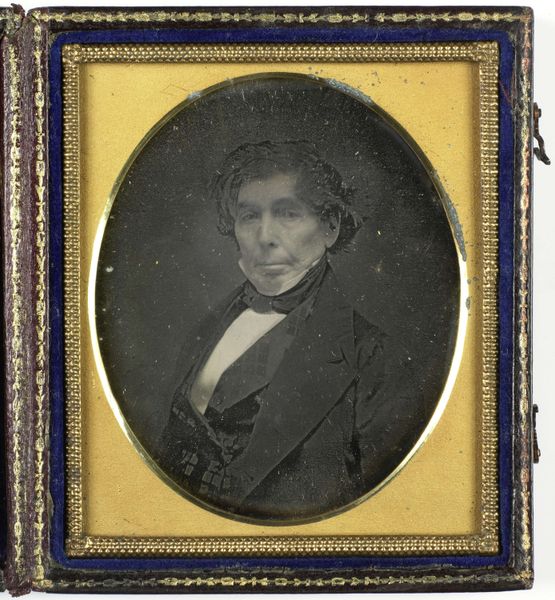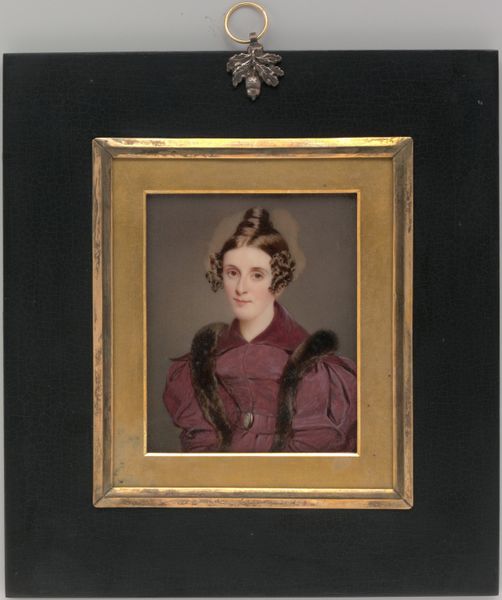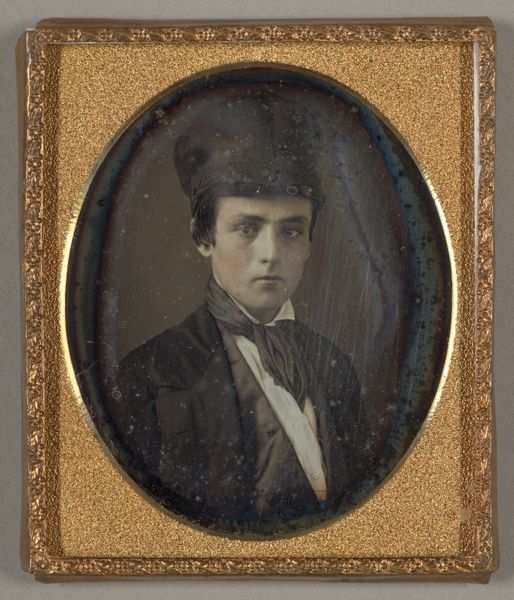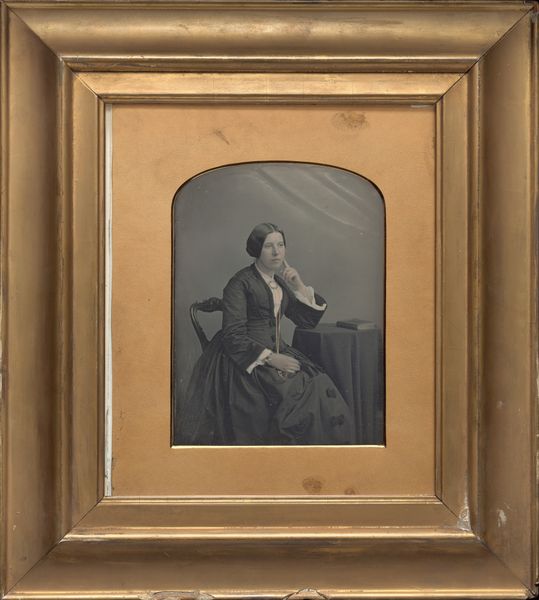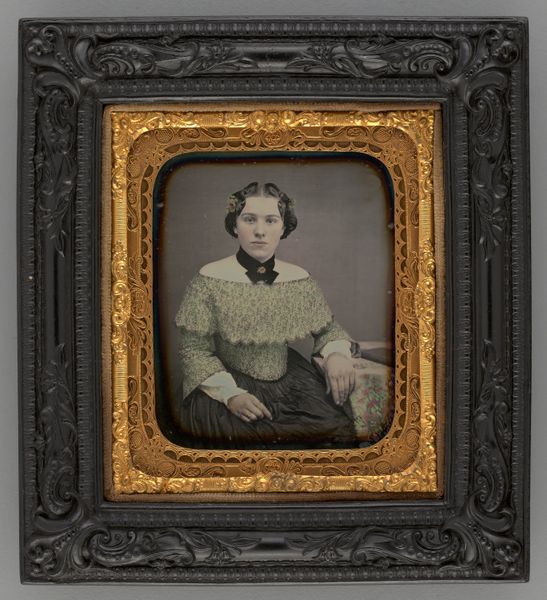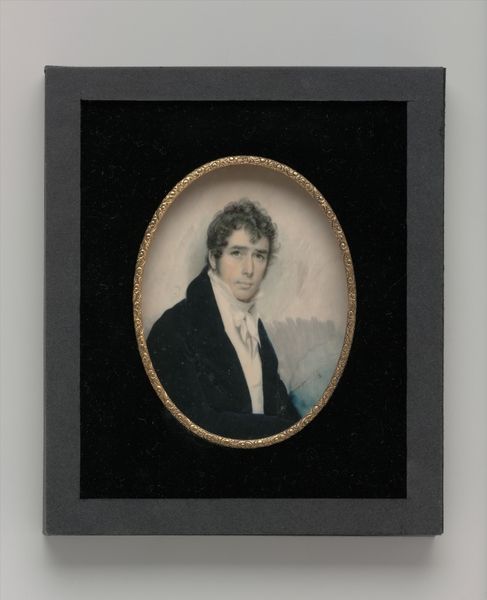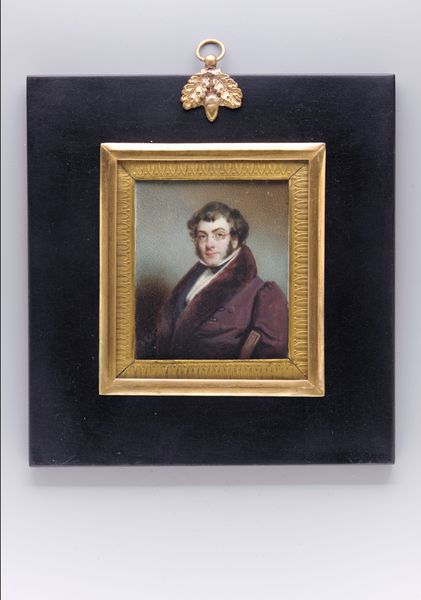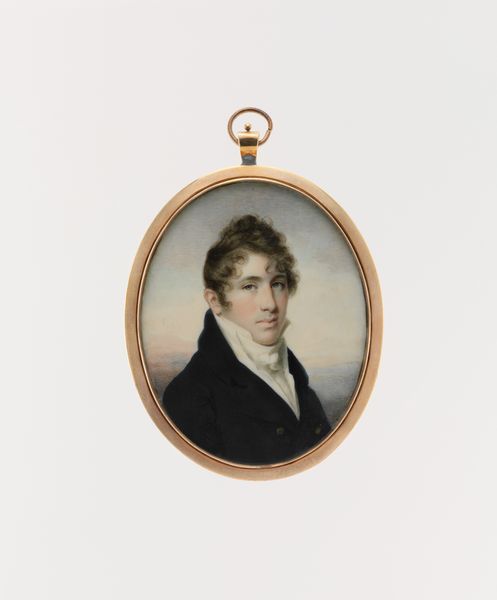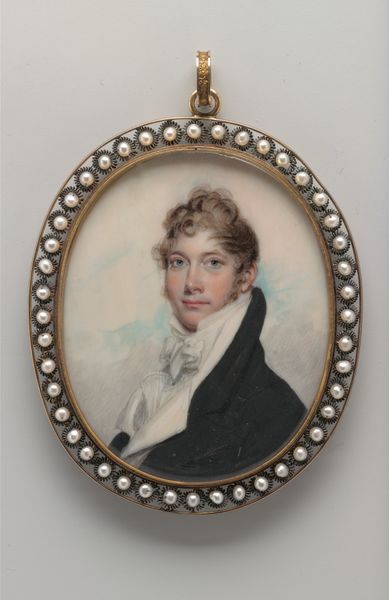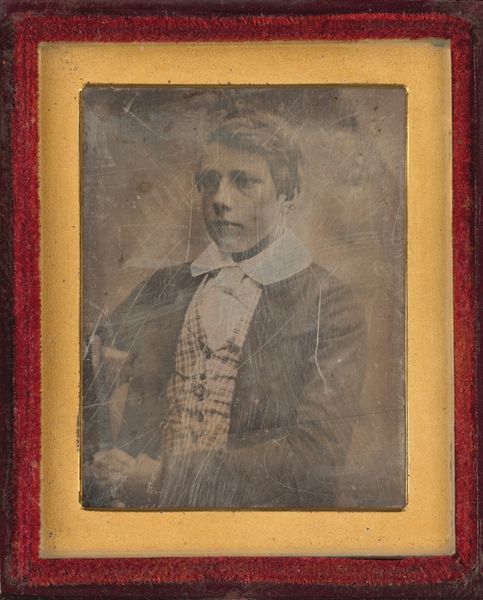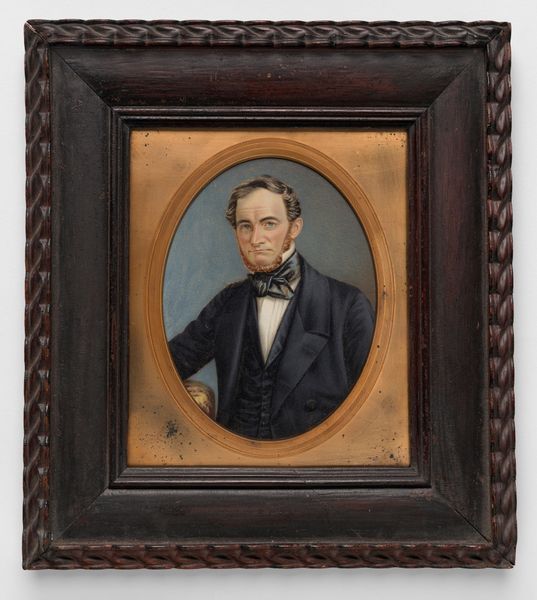
painting
#
portrait
#
painting
#
academic-art
#
miniature
#
fine art portrait
Dimensions: 9 x 8 1/4 x 1/2 in. (22.86 x 20.96 x 1.27 cm) (outer frame)
Copyright: Public Domain
Curator: This intimate portrait before us is entitled "Portrait of Countess Phelps-Resse," dating back to the 19th century, now residing here at the Minneapolis Institute of Art. Editor: It has a restrained, almost somber quality to it, doesn’t it? The diminutive size adds to the sense of intimacy, making you want to lean in closer. Curator: The portrait exists, of course, within a larger socio-political context. Consider the role of women during the 19th century, particularly women of her social standing. Portraiture served not only as a means of preserving likeness but also as a performance of status and identity. The meticulous detail afforded to her clothing and the controlled expression upon her face are reflective of the expectations and constraints placed upon women in her social circle. Editor: Yes, the gaze she gives us definitely says something about the role of women in society. There’s a controlled power in her stance. She doesn’t engage in sentimentality. Instead, the portrait conveys her belonging to the ruling class while it reflects how she presents herself, with both power and authority. Do you notice anything interesting about the lace around her neck? Curator: Absolutely, and think of it as being intentionally displayed with her aristocratic standing as she subtly challenged the expected Victorian model of a dutiful, subservient woman through the carefully managed performance of public image and authority in her dress. Editor: It’s almost a silent assertion. That neck piece makes it stand out. It emphasizes her features and helps draw our focus. But in its own way, I read her positionality from her serious stare directly out at us, even challenging our notions of appropriate representation and subverting patriarchal narratives through careful and considered styling choices. Curator: That's an interesting reading that offers nuanced context of both her and the system within she operates, reminding us of art’s agency to reflect not just the visible realities, but social constructs as well. It encourages questioning what the painter intended while opening dialogues around gender and representation. Editor: And that’s precisely what makes it so compelling; a glimpse into not just a life, but the subtle negotiations of power within a prescribed existence, inviting us to connect with history through an explicitly current and relevant lens.
Comments
No comments
Be the first to comment and join the conversation on the ultimate creative platform.
